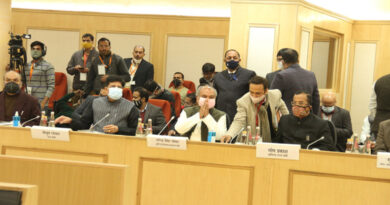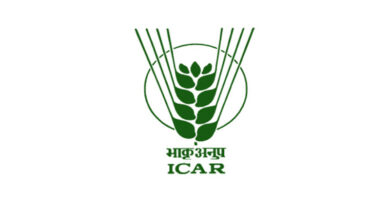Agriculture set for accelerated growth
02 February New Delhi: Over the last six years, the Government has been envisioning re-mandating the agricultural sector as an enterprise for employment and incomes for the farmers. Strategised as Doubling Farmers’ Income by 2022, the roadmap aims at higher productivity-linked production, rationalisation of production costs, diversification into high value agriculture and increased real remunerative prices on the agri-produce.
Also Read: A quantity of 8970424 Cotton Bales valuing Rs. 2623528 Crore procured benefitting 1847662 Farmers
The Budget needs to be evaluated not through a compartmentalised pinhole, but from an ecosystem approach. Appropriate it is, therefore, to consider the budgetary allocations of all Ministries that aid farming and farmers.
The allocations for the three directly responsible Ministries — Agriculture and Farmers’ Welfare; Fisheries, Animal Husbandry & Dairying; and Food Processing Industries (MoFPI) — add up to a high ₹1,37,088 crore.
The twin demands of higher growth of the sectoral GVA and farmers’ income are sought to be achieved by tapping the growth potential of horticulture, animal husbandry, dairying and fisheries. This is reflected in budgetary allocations for enhancing productivity, pest and disease control, and post-harvest management.
The Budget allays the farmers’ apprehensions relating to APMCs and the MSP system, including procurement thereof, by assuring its steady growth on the back of a catapult that the last six years have experienced in terms of investments, quantities procured and number of farmers benefited.
The growth rate in agriculture enjoys a high elasticity of 1.29 per cent vis-à-vis gross capital formation. The Budget increases the credit target to ₹16.5 lakh crores, and the interest subvention through Kisan Credit Cards will now be available on crops, animals and fisheries, making the facility more inclusive. There are marked enhancements in the Micro Irrigation Fund from ₹5,000 crore to ₹10,000 crore, and in the Rural Infrastructure Fund from ₹34,000 crore to ₹40,000 crore apart from more than ₹1,50,000 crores under Atmanirbhar Bharat over the four-year period. This will remove the Achilles heel that comes from poor agri-logistics.
Rightly does the Budget invest its confidence in risk management and allocates ₹16,000 crore for PMFBY, besides needed resources for digital platform.
The Budget articulates its continued commitment to procurement of paddy and wheat under NFSA (through FCI & decentralised system), as also building of 40 lakh tonnes of sugar buffer and assistance to sugar mills. The cotton and raw silk prices get a fillip with rise in customs duty; exemption on solar panels making it easier for farmers to adopt solar energy systems under PM-KUSUM for supplementary incomes; and reducing the margin money contribution from 25 per cent to 15 per cent benefiting the young-entrepreneurs under Stand-up India, which includes agriculture and allied sectors.
Even as the emphasis on post-production management, including marketing, capital formation and risk negotiation, is looked at more elaborately, the government’s continued engagement with promoting higher productivity, resource use efficiency and sustainable technology remains uncompromised.
One must also appreciate that high investments that will come through MGNREGA (₹73,000 crore), roads and highways (₹1,10,055 crore) and other infrastructural activities will pump in money into the rural sector, create jobs, and generate additional incomes which will more likely be channelised into agriculture as investment.
The resilience that the agriculture sector showed during the difficult Covid phase has been well-recognised in the Budget, and consequently pushed for an accelerated growth. Given that the Budget does not remain fundamentalist on the matter of fiscal deficit, and aims to mobilise resources through market borrowings, we can be confident of the sector receiving the indicated allocations. We now need to concentrate on efficiency and effectiveness of the implementation.
The writer is Chairman, Empowered Body, Doubling Farmers’ Income, Ministry of Agriculture and Farmers’ Welfare, GoI















